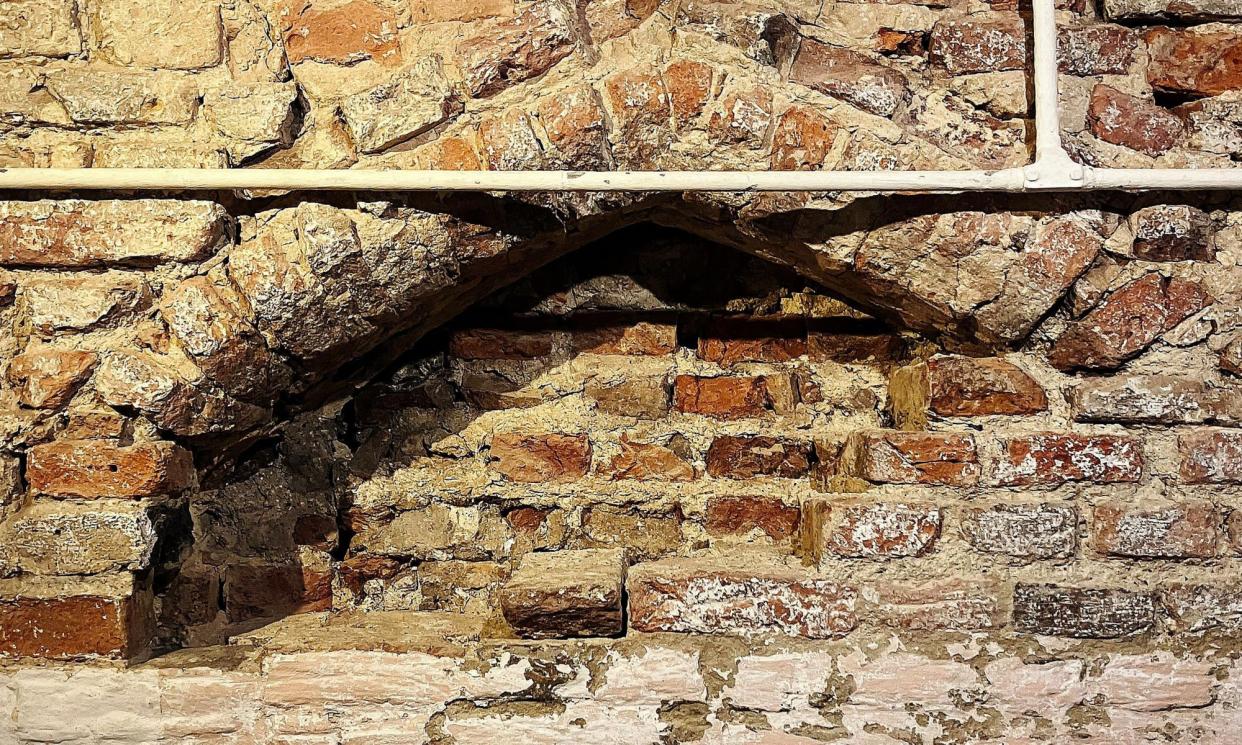Archaeologists uncover ‘Shakespeare’ doorway in Norfolk theatre

A 600-year-old doorway that may have once led to William Shakespeare’s dressing room has been discovered in the UK’s oldest working theatre.
The archway was found in St George’s Guildhall, in King’s Lynn, Norfolk, during archaeological investigations at the theatre, triggered by curiosity about a “weird shape” in a wall.
The creative director, Tim FitzHigham, said the find was “mind-boggling” and that the archway “has got to be pre-1405 as the hall’s medieval roof is held up above it”.
“We’ve got a door that would definitely have been here in the years we think Shakespeare played here and, in all likelihood, was the door to a room where the players changed and stored props,” he said.
“It is simply staggering that, again, a slight hunch or weird shape in the wall has turned out to be something frankly extraordinary.”
FitzHigham said the archway had been identified as the door to what is believed to have originally been the “guild robing room”.
“This room was used by the highest level of guild members to dress in their finery before feasting upstairs,” he said. “The guilds, akin to 1400s membership clubs, ceased using the hall, and the room likely took on the role of a dressing room or “tiring house” for visiting actors.”
The Grade I-listed St George’s Guildhall, described as the largest intact medieval guildhall in England, is undergoing major conservation work.
In Shakespeare’s time it was used extensively by touring companies, and Queen Elizabeth’s Men, a troupe of actors formed at the command of the Tudor queen in 1583, performed there 10 times in the late 1500s.
Shakespeare and his company were believed to be on tour in King’s Lynn in 1592-93 when London’s theatres were closed because of a plague outbreak. Last year the theatre identified floorboards believed to have formed part of a stage once trodden by the Bard.
Dr Jonathan Clarke, an archaeologist who helped uncover the archway which was hidden under two layers of plasterboard and an 18th-century brick wall, said it would have led to a “medium-sized, low-status room” and would probably have only been covered by a hanging.
“It is the type of room where travelling groups of players might change due to its location within the guildhall,” he said. “It would have given them a private space where they could put things, change and then travel up the staircase to appear on the first floor in their costume.”


